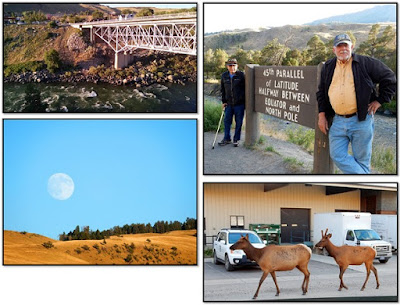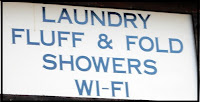 |
| Top L to R: Bridge at Gardiner, 45th Parallel Bottom L to R: Moon at Gardiner, Elk |
 |
| Laundry Sign |
 |
| Original North Entrance to Yellowstone National Park |
While seeing Yellowstone was fun, we did take a break from nature and went in search of
 |
| Top L to R: Decorated Traffic Boxes, Dogs Bottom L to R: Garden of Beadin'. Stix |
At the end of our visit to Yellowstone National Park, we left through the northeast gate, visiting Cooke City only briefly. This looks like a little tourist town, but it has a diverse
 |
| Ridge near Cooke City |
The road from Cooke City heads south, taking you into Cody, Wyoming. Along the way is a wonderful drive on Chief Joseph Scenic Byway across the Absaroka Range through the
 |
| Views from Dead Indian Pass |
 |
| Top L to R: Cody Firearms Collection, Daniadas Sculpture Bottom L to R: Statue Buffalo Bill, Rough Riders Poster |
From Cody it’s only about 80 miles (129 km) into Thermopolis (Greek for ‘Hot City’). Even
 |
| Left: Masonic Temple, Thermopolis Right T to B: Wind River Valley Wall, Wind River Valley Bridge |
 |
| L to R: West Texas Sunflower Fields, Windmills |
No comments:
Post a Comment